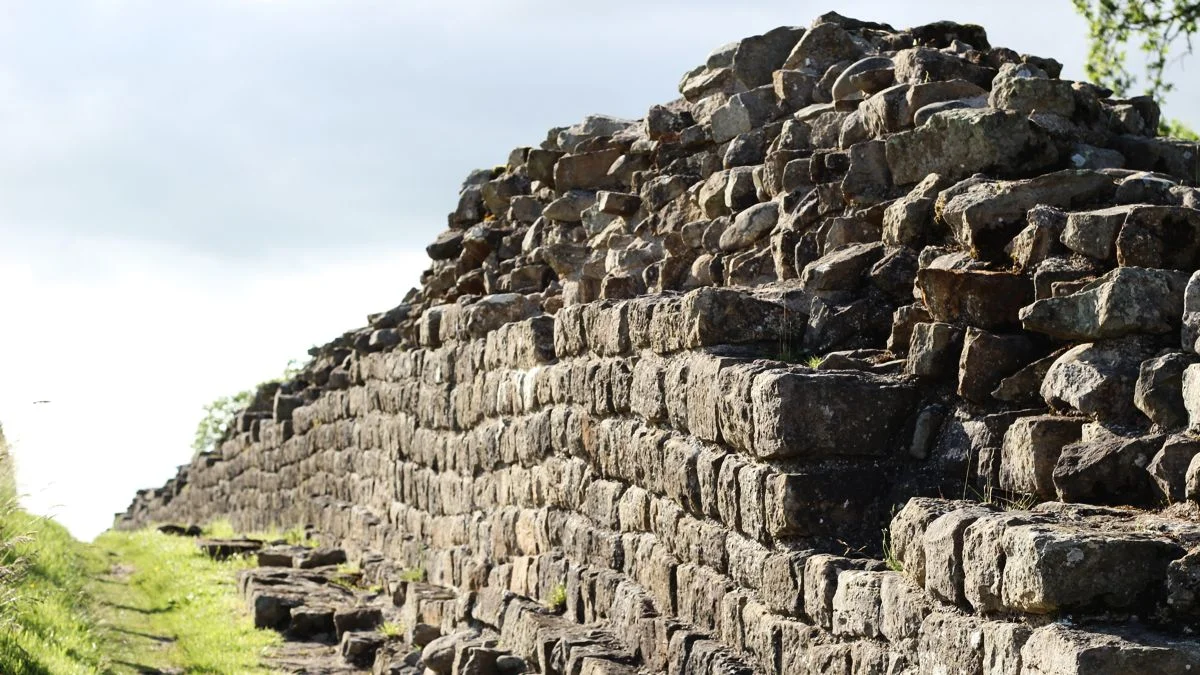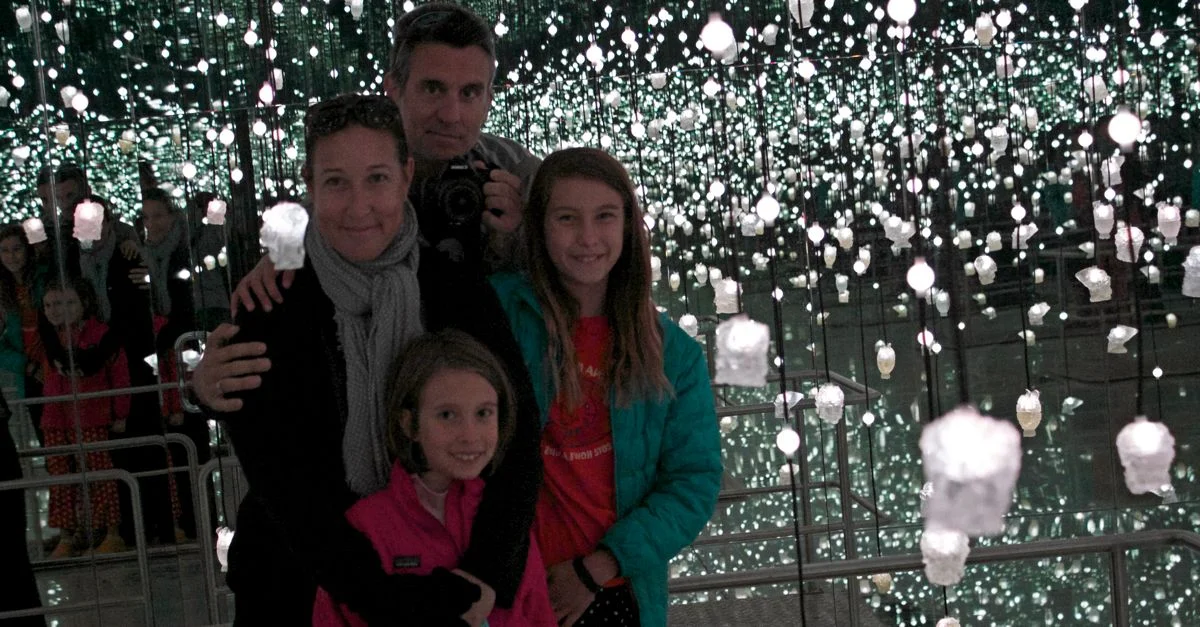Tuesday, 31-03-2015. Day 223.
Mazapan, Damascene, Sharp Knives.
It had been a while since either Samantha or I had driven car, but seeing as how our plans had us road tripping through Spain, it was time once again to take the wheel. So after breakfast we walked over to the Madrid train station and picked up a blue VW Golf from Europcar.
We drove back to the hotel, and after some creative maneuvering to get through the side streets of Madrid and some creative packing that just managed to fit all our luggage into the car, we were on our way to Toledo, about an hour's drive south of Madrid.
One we got off the small streets of Madrid and onto the main highway to Toledo, we found the Spanish roads to be quite pleasant to drive on. Unlike some of the old, cobblestone streets in the city, the highways were modern, wide, and well-maintained.
Toledo
The city of Toledo was the capital of Spain until 1560 when Felipe II moved the court to Madrid. Today, the whole city is one big UNESCO World Heritage Site. In addition to its cultural significance as a place where Christianity, Judaism, and Islam intersected and the general preservation of many different examples of old-style architecture, it's also notable because of the Alcázar, the Toledo Cathedral, and numerous other churches from different eras.
After finding a spot to park the car in a public parking facility (parking in Spain’s cities is not easy to come by, a fact we would be constantly reminded of on this segment of the trip), we met the host for our apartment and walked a short distance down narrow streets to our apartment, called Homelife El Temple.
This place was great, one of the better apartments we’d had on the trip. It was so great, in fact we regretted that we’d be in Toledo only one night. If you’re planning on visiting Toledo, be sure to check this place out.
After we got settled into the apartment, we had plenty of daylight left (thanks to Daylight Savings Time). We wanted to check out the Sephardic Museum, so we walked toward the Zocodover, Toledo’s main square. On the way there we walked past the Alcázar, a huge rectangular block fortress that dominates one end of the city.
The Alcázar
The Alcázar, built on the highest point in Toledo, was once a Roman palace and later a fortification for the Ottomans who occupied Spain before it did its duty as a stronghold for Castilian kings Alfonso VI and Alfonoso X.
It is most famous its role in a 1936 siege during the Spanish Civil War when Nationalist forces (in support of Francisco Franco) inside the Alcázar were under attack by Spanish Republican forces for two months. Franco’s forces eventually won when the Army of Africa arrived to break the siege.
Toledo is a popular tourist destination, and as we walked down the hill we passed numerous shops selling the famous black-and-gold damascene pottery; a lot of swords, knives, and muskets; and plenty of mazapan, a confection they say is different from marzipan (but it's pretty much the same thing as we found out the hard way).
Zocodover
The Zocodover seems to be the center of the tourist activities for the city, and when we arrived it was bustling. There’s a train that runs through here pretty regularly. Because of its central location, we used it as a place to orient ourselves when traversing Toledo, which can be a confusing business.
The streets in Toledo are narrow, labyrinthine walkways. We found it was relatively easy to get turned around as you’re looking for a destination. Even with Google Maps to guide us, we had some trouble navigating the twisted pathways. We didn't mind too much, though. We weren't in a hurry and it was a nice day.
We did, purely by coincidence, manage to find another place selling cookies made by nuns, this time from the Convento de San Antonio. These cookies were made primarily from mazapan (which was not a favorite of our family), and that was how we discovered mazapan is pretty much marzipan.
Museo Sefardi (Sinagoga El Transito)
Eventually, after a few wrong turns, we found the Sephardic Museum we were looking for.
As we learned during our tour in Madrid, the story of Jews in Spain isn't the happiest of tales, and Toledo is no exception. The Synagogue of El Transito was originally built in the 14th century with the permission of King Pedro I of Castile (you know, Peter the Cruel) by Samuel ha-Levi, who was the king’s treasurer (until Pedro had him executed for supposed embezzlement).
After the Jews were expelled from Spain in 1492, the synagogue became a church and was briefly a military headquarters in the Napoleonic Wars and a hospital before being converted to the current Sephardic Museum. Inside the museum, which has some really amazing architecture, there area many displays about daily life of Jews in early Spain and plenty of artifacts of Jewish culture.
On our way back toward Zocodover, we had a sudden need to use a restroom. This happens every so often when traveling. Fortunately, there was a public toilet just up the road we were on. Unfortunately, it wasn’t free and it only accepted one euro coins. And we only had a single two euro coin and handful of euro cent coins in various denominations. So we went to a nearby shop to get some change.
When the woman working there found out it was for the restroom, she told us were free bathrooms next door at the Fundacion Caja Castilla La Mancha, which was an amazing building that, in addition to having free restrooms, was displaying “15 Fotógrafos, 15 Ciudades Únicas,” a really cool exhibit of photographs from 15 Spanish photographers of the cities with which they have a personal connection. It was a very well done exhibition and a totally random discovery.
Once we got back to Zocodover, we decided to get some dinner. So we stopped in at a tapas place our hot recommended to us and had a nice, leisurely meal before we headed back up the hill and settled in for the evening.
Little did we know, the the girls were planning an April Fools’ Day surprise for us ...
Notable Statistics:
Hours in a car: 1
UNESCO World Heritage Sites visited: 1 (30 Cumulative)
Shops selling Lord of the Rings weapons: 7

Tom Fassbender is a writer of things with a strong adventurous streak. He also drinks coffee.























